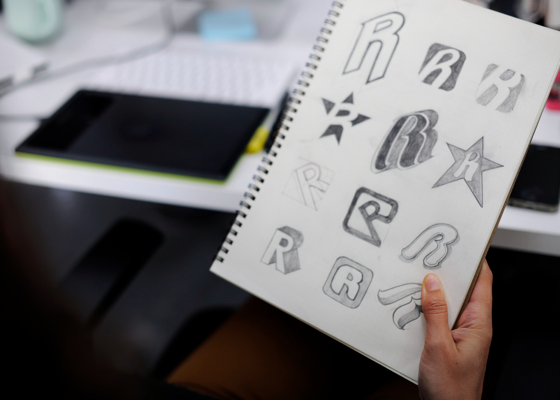Ask a consumer what’s the difference between a logo and brand, and they’ll probably guess they’re the same thing.
Ask a marketer the same question, and the answers will vary wildly. Frankly, I don’t think most marketers know the difference, and I’m not criticizing. There was a time when I had no clue, either, because unless someone breaks it down for you – not with some B.S. marketing-ese taught in school but with a real-world answer – it’s confusing.
And so, I turned to a video clip of Seth Godin explaining the difference, and while his explanation isn’t super short, I do think it explains the difference in a way we can all understand AND use to build a REAL business that makes SIGNIFICANT money.
Here’s what Seth has to say:
“Companies spend way too much time on their logo. If Nike opened a hotel, I think we would be able to guess pretty accurately what it would be like. If Hyatt came out with sneakers, we’d have no clue, because Hyatt doesn’t have a brand. They have a logo.
“If I swap the signs on a hotel at that price point, you couldn’t tell if you were at a Marriott, if you were at a Hilton or the Hyatt, because there’s no brand.
“What it means to have a brand is you’ve made a promise to people. They have expectations. They know what they should expect the next time. And if that is distinct, you’ve earned something. If it’s not distinct, let’s admit you make a commodity and you’re trying to charge just a little bit extra for peace of mind.
“The problem that Hyatt and Hilton and Marriott and the rest have is ‘sort by price.’ When I go online now to find a hotel, I sort by price. Why would I pay $200 extra to go a block away? I don’t.
“So what’s the value of a brand? The value of a brand is how much extra am I paying above the substitute. And if I’m not paying extra, you don’t have a brand.”
Okay, let’s break this down. If you go to the store and look at laundry detergents, you’ll find a lot of very similar items with very similar prices. Yes, maybe you always grab the Tide with Bleach, but let’s be honest: Most any other laundry detergent will work just as well. Those products have logos, not brands.
Now let’s look at chocolates. You can buy an entire bag of foil wrapped chocolate Easter eggs for about $3. Taste one of those eggs and you’ll realize chocolate is not one of the first ingredients. Who makes this lousy stuff? I couldn’t even tell you.
Then there’s products like Hershey’s Chocolate Bar. While it’s certainly much better than those ‘chocolate’ eggs, it’s not much different from many other chocolates available for similar price points. I can go to Amazon and get 3.5 pounds of Hershey Bars for $39 with Prime shipping. Other candy bars and chocolate bars have similar pricing.
But search for Godiva Chocolates on Amazon and what do you find? Half a pound costs $40. That means it’s more than 7 times more expensive than Hershey.
7 times!!!
Is Godiva 7 times better than Hershey? Frankly, I don’t think so. But their brand name is one that people love. Just whisper the name, “Godiva Chocolates” in someone’s ear and they’ll melt. Try that with, “Hershey Bar” and they’ll look at you like you’re someone to avoid.
Do you have a logo? Or a brand name?
How can you make your business look, sound and be so different from anything else that don’t have any direct competition? Remember, from Godiva’s standpoint, Hershey isn’t even in the same business.
But Tide, All, Gain, Era, Arm and Hammer and so forth are so similar, if you substituted one for another most people would never notice the difference. They all face stiff competition because they have no clear way of differentiating themselves.
Being different is definitely more difficult in some industries. In some cases, you’ll need to change how you do business to stand apart, rather than the product itself. For example (and completely off the top of my head) if I owned a laundry detergent, I’d market myself to moms and dads. Mine would be the laundry soap that not only gets kids clothes clean without chemicals, but also gives away a free book with every box of detergent to help their kids learn to love reading.
If I was starting a chocolate business, I know the cheap end of chocolates is saturated. Organic chocolates still has room to enter. And people love to try new, strange, exotic things. Plus people love pets. That’s why my chocolate company would be 100% organic, incorporate interesting flavor combinations (chocolate, banana, walnut, anybody?) and feature adorable, limited edition pet artwork on the labels. Buy the original artwork and all proceeds go to animal shelters. Or something like that.
Again, that’s just off the top of my head, so I have no doubt that with some thought you can do even better.
Questions to ask yourself:
How can your product or service be different from anything else out there?
And how will this difference command a higher price than your closest competitors?
Claim Your Free MP3 And PDF Training: The 3-Part Plan To Topping $100,000 Per Year In Profit
Enter your name and email address below to receive a new lesson delivered to your inbox once a week. Your first lesson will be delivered immediately.

Privacy Policy : We value your privacy. You can unsubscribe from receiving future emails with 1 click at any time.
